In 1946 Cessna returned to producing civilian aircraft following WWII with the 120 and 140 models. Both are two person tailwheel aircraft with 85 or 90hp engines. Two years later Cessna came out with the 170 which was a stretched 140 with a six cylinder 145hp engine. The C170 was marketed as a four person aircraft for businessmen. Cessna made three versions of the C170: The 170 (1948 - 1949) had fabric covered wings, V struts, and the same tale fin as the 140. The 170A (1949 - 1951) had all metal wings, single struts, and the same dorsal fin as the C195. Finally the 170B (1952 - 1956) had semi-Fowler flaps and dihedral angle was increased from zero to three degrees. Cessna continued to make changes to the 170B until a front wheel was added in 1956 and the 172 was born. Cessna made over 5,000 170s and well over half of them are still flying more than fifty years later! All model 170s perform pretty much the same. They cruise at 115 to 120 mph and burn from 7 to 8 gph. They can carry a little over 700 lbs when full of fuel for a flight lasting over four hours.
Although 170s are over fifty years old, they are quite similar to new 172s. (View my Cessna Comparison page for a side-by-side comparison.) The main difference is the placement of the third wheel. Cessna moved the third wheel to the front of the plane to make landing and takeoff easier. Tailwheel aircraft have their center of gravity located behind their main gear causing the tail to want swap ends with the front of the plane while rolling on the ground. Nosewheel aircraft have their center of gravity located in front of their main gear causing the front of the plane to want to stay in front of the plane when rolling on the ground. Stated simply, you need to work to keep a tailwheel aircraft going straight while you need to work to turn a nosewheel aircraft. This was probably a good idea that made learning to fly safer and easier allowing Cessna to sell more aircraft. However, like many things in life when you make things easier and safer you also remove much of the fun.
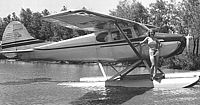
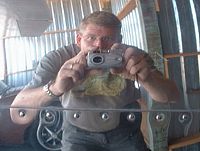 The 170 originally came with a stripe down the side just like the 170A shown in the photo to the left. Before dad spent hours and hours polishing it, you could easily see where the original strips/numbers were due to scratch marks left from sandpaper used to remove the original paint. Dad flew the plane for a number of years before polishing it to the mirror like finish it has today. It takes, at a minimum, two full weekends per year of polishing to keep it looking so shiny. The picture to the right was taken after my first attempt at polishing. I'm sure glad dad gave it to me with a polished finish.
The 170 originally came with a stripe down the side just like the 170A shown in the photo to the left. Before dad spent hours and hours polishing it, you could easily see where the original strips/numbers were due to scratch marks left from sandpaper used to remove the original paint. Dad flew the plane for a number of years before polishing it to the mirror like finish it has today. It takes, at a minimum, two full weekends per year of polishing to keep it looking so shiny. The picture to the right was taken after my first attempt at polishing. I'm sure glad dad gave it to me with a polished finish.
When dad purchased the 170 it was pretty much original with the exception of its missing paint. He made the decision early on to keep things as original as possible. Dad added a newer radio, transponder, and made other improvements/repairs to make the plane safer but he keep the plane as original as possible. I hope to do the same.
~ Improvements / Repairs ~
Intercom - Fall 2005:
I installed a four place intercom to make taking lessons easier. You can see it in the lower left corner of the following picture. The intercom makes flying with others much more enjoyable. Aside from the intercom, this is how the panel looked when I acquired the 170 from my father.
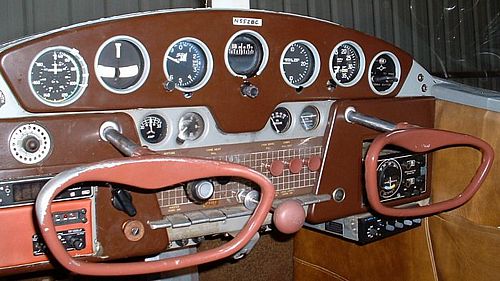
|
New Rudder - Winter 2006:
Most 170s that live outdoors develop a crack in the rudder skin under the counterweight due to years of being blown by the wind. My A&P recommend the rudder be reskinned to fix this problem. The rudderhorn also needed to be replaced so we decided it would be a good idea to have both repaired during the annual. After removing the rudderhorn we discovered it was much more worn than we thought including a crack at a stress point. As you can see, the A&P did a great job on the rudder.

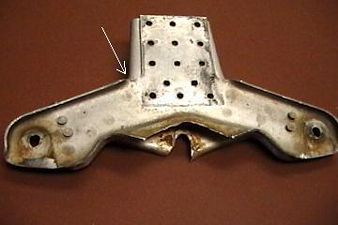
|
New Gyros - Spring 2006:
I was planning on installing a attitude indicator and new directional gyro down the road when I was ready to start working on an instrument rating. My instructor convinced me I should make the change earlier so we could use the gyros while I was working on my private pilot license. Making the change turned out to be a good decision as I use both every time I fly.

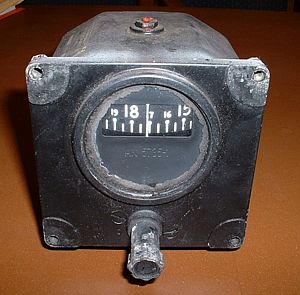
After doing a little research I discovered my old directional gyro is the same type used in B-17s and other WWII aircraft. Pretty cool!
|
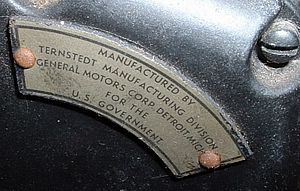
|
|
|
Various Repairs - January 2007:
|
During the 2007 annual, we (the A&P) once again decided to make some repairs/improvements. There was an exhaust leak, the windscreen had some cracks, the tailwheel spring bracket had a crack, and, there were also a number of minor repairs such as fixing leaky oil seals and removing mouse nests.
|
Instead of continuing to repair the old exhaust system a new/used system was purchased. The new system is off a 170B which should provide slightly more heat in the cabin on cold flights. Another advantage of the new system is the pipes are symmetrical as they exit the cauling - the old system had uneven pipes. The A&P also milled the exhaust ports and made other repairs while everything was apart.

|
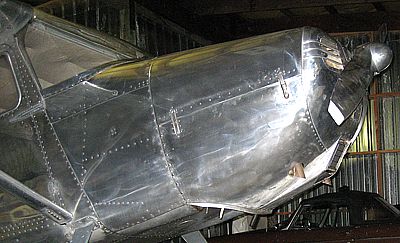
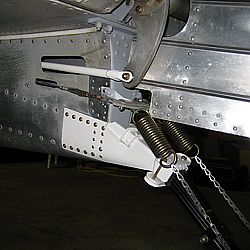 In the above picture you can see both the new windscreen and the symmetrical exhaust stacks.
In the above picture you can see both the new windscreen and the symmetrical exhaust stacks.
To the left you can see the new tailwheel spring bracket. They also replaced several cracked bulkheads while the tale was off.
|
|
Various Repairs - March 2008:
|
As I was not expecting any expensive repairs this year I asked the A&P to install a set of BAS shoulder harnesses as part of the annual. After learning that my wife does not hate flying (she said flying was actually more relaxing than driving) I decided to install a set of shoulder harnesses to make her flying as safe and enjoyable as possible.
The old mechanical voltage regulator was upgraded to a Zeftronics solid state regulator. I didn't have any complaints with the old regulator but I suppose the solid state unit is more reliable. There were other small repairs such as the removal of some bird and mouse nests and the the replacement of the battery box.
The A&P also inspected my prior installation of an F&M oil filter. One advantage of the F&M filter is I can now change the oil without removing the cowling.
|
Aircraft Upgrade - November 2010:
|
In November of 2010 I traded the 170 for a Mooney M20B. The Mooney was an upgrade in speed and efficiency. It also resulted in a huge upgrade in avionics. It was a downgrade in fun though. There is not much in life that is as much fun as landing a 170 on a grass strip.
|
|
